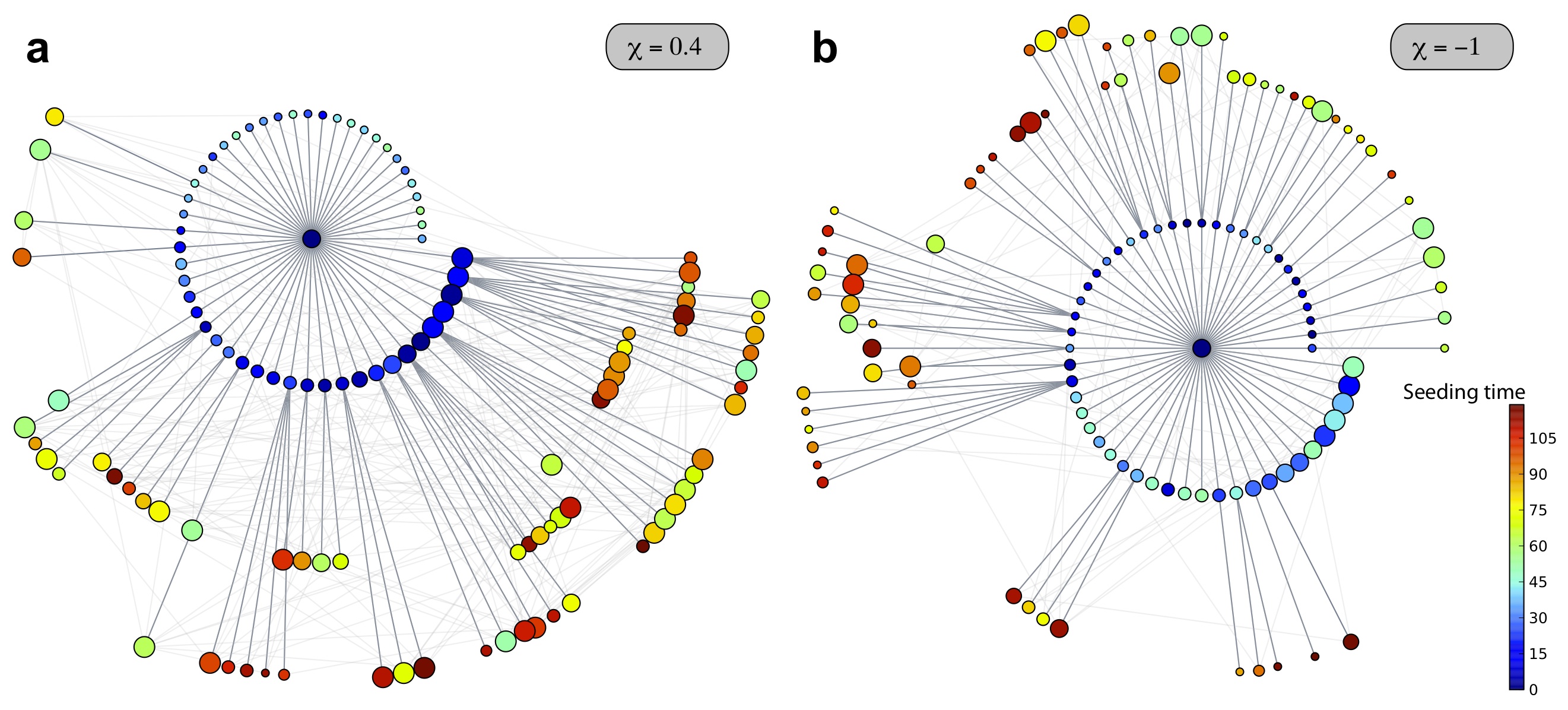publications, research
New paper in Sci. Rep. on the role of the heterogenous length of stay of hosts’ movements on the spatial epidemic spread June 27, 2012
Empirical data show that the traveling dynamics of individuals is characterized by a broadly distributed trip duration, with a length of stay at destination spanning many orders of magnitude. Such varying length of stay affects the possibility and duration of mixing events among individuals and may therefore have a strong impact on the geographical propagation of infectious diseases. We account for this aspect in the theoretical work recently published in
Heterogeneous length of stay of hosts’ movements and spatial epidemic spread
Chiara Poletto, Michele Tizzoni, Vittoria Colizza
Nature Scientific Reports 2, 476 (2012).
We define a theoretical framework able to account for a geographical heterogeneity in the length of stay in order to study its impact on the invasion potential of epidemics and on their spreading pattern. By taking into account the complex features of the hosts mobility network connecting different subpopulations in space, it is possible to describe the invasion process of an epidemic seeded in a given subpopulation by considering the non-Markovian feature of the hosts movements and the fluctuations of the time they spend at destination. This allows us to identify the conditions under which a local outbreak reaches pandemic proportions quantifying the relative role of each specific ingredient.
The analyses presented in the paper show that different degrees of heterogeneity of the length of stay determine a variety of regimes in which the epidemic spread is either enhanced or unable to occur. In addition, the different choices of the length of stay distribution alter the pattern of propagation of an infectious disease on the network of subpopulations, if a global outbreak occurs.

Invasion potential of an epidemic. R* determines the transmission potential of the disease at the global level accounting for different aspects including disease epidemic parameters and host demography and mobility. It defines the global invasion condition: when R*>1 the epidemic is able to invade the full mobility network, otherwise it is confined in the origin location. Here R* is plotted as a function of the two parameters R0, which quantifies the transmission potential of the disease in a single subpopulation, and χ, which rules the level of heterogeneity of the length of stay, τk , and its correlation with the connectivity of the population, the degree k, according to the expression τk = τ k χ, i.e. positive (negative) values of χ indicate a positive (negative) correlation between length of stay and degree. The invasion potential is extremely sensitive to variation in R0 and χ.

Spreading pattern of an epidemic above the invasion threshold. χ>0 (χ<0) indicates a positive (negative) correlation between the length of stay and the connectivity of a population, i.e. its degree. Panels (a) and (b) show the first 120 nodes to be reached by the epidemic on a network of 104 nodes in the two opposite scenarios. Larger width grey links correspond to the paths of infection and lighter grey ones to the existing connections among visible nodes. Nodes are colour coded according to the time of their seeding, and their size scales with their degree. The spreading pattern is completely different in the two scenarios: for χ= 0.4, largely connected populations have a predominant role in the further spatial spread of the disease; on the opposite for χ= -1, peripheral populations become instead mainly responsible of the spreading dynamics towards the rest of the system.
Posts by category: awards/honors, news, outreach, publications, research, talks, team news



